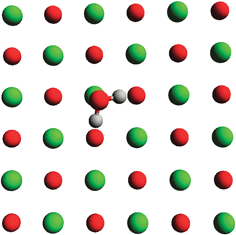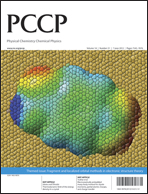The interaction of a water molecule with the (100) surface of MgO as described by cluster models is studied using MP2, coupled MP2 (MP2C) and symmetry–adapted perturbation theory (SAPT) methods. In addition, diffusion Monte Carlo (DMC) results are presented for several slab models as well as for the smallest, 2X2 cluster model. For the 2X2 model it is found that the MP2C, DMC, and CCSD(T) methods give nearly the same potential energy curve for the water–cluster interaction, whereas the potential energy curve from the SAPT calculations differs slightly from those of the other methods. The interaction of the water molecule with the cluster models of the MgO(100) surface is weakened upon expanding the number of layers from one to two and also upon expanding the description of the layers from 2X2 to 4X4 to 6X6. The SAPT calculations reveal that both these expansions of the cluster model are accompanied by reductions in the magnitudes of the induction and dispersion constributions. The best estimate of the energy for binding an isolated water molecule to the surface obtained from the cluster model calculations is in good agreement with that obtained from the DMC calculations using a 2–layer slab model with periodic boundary conditions.

You have access to this article
 Please wait while we load your content...
Something went wrong. Try again?
Please wait while we load your content...
Something went wrong. Try again?


 Please wait while we load your content...
Please wait while we load your content...